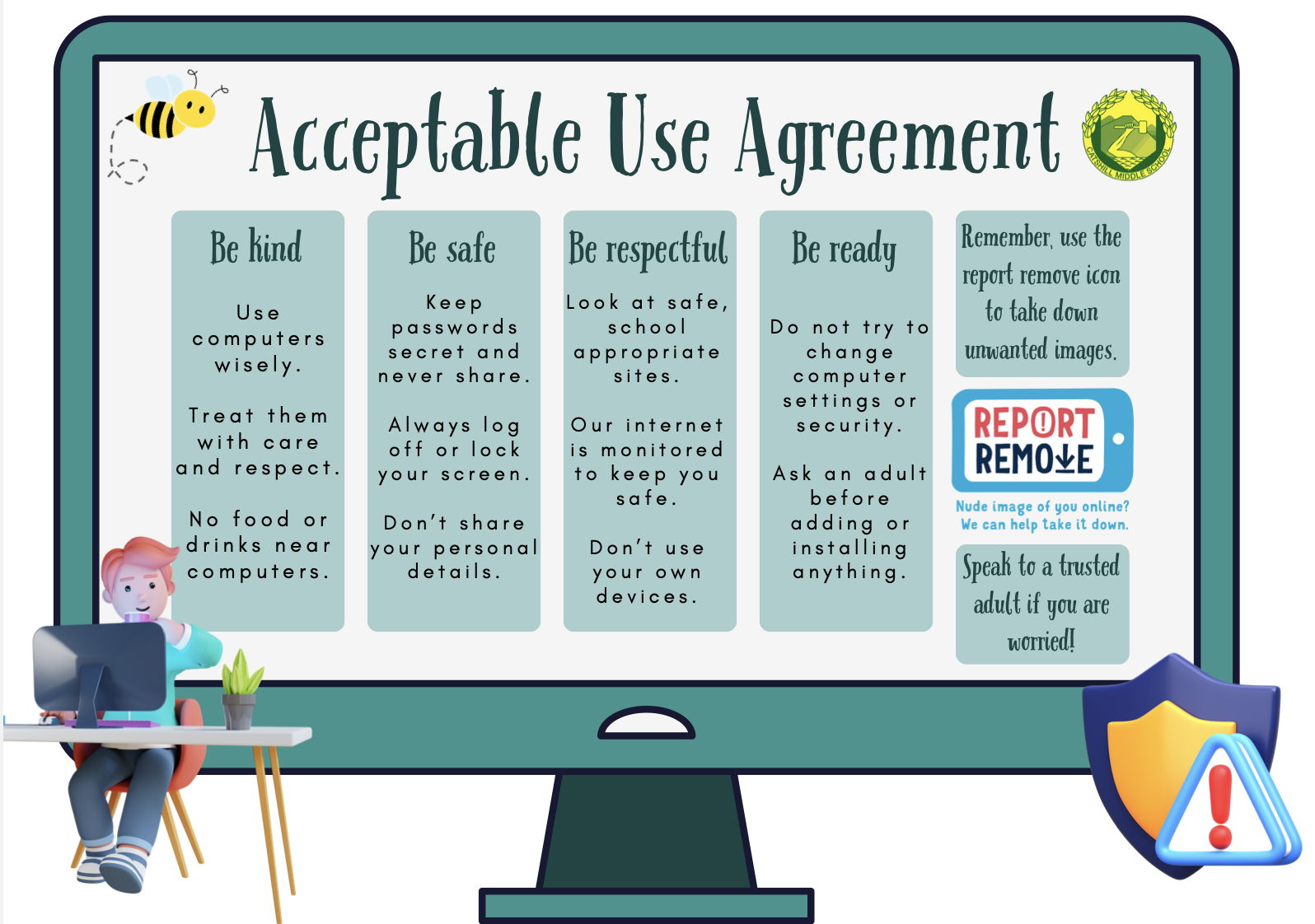Online Safety
Our Commitment to Keeping Children Safe Online
At Catshill Middle School, we are committed to ensuring that every child is safe, confident, and responsible when using digital technologies. Online safety is a vital part of our safeguarding approach and is embedded across the whole school community — through our curriculum, assemblies, staff training, Acceptable Use Agreements, and robust filtering and monitoring systems.
We recognise that the internet offers many opportunities for learning and creativity, but we also understand the potential risks. Our aim is to empower pupils to use technology safely, respectfully, and responsibly — both in school and at home.
We promote Online safety in the following ways:
1. Our Curriculum
Online safety is taught to all pupils as part of our Computing and PSHE & RSE curriculum. Lessons cover key topics such as:
-
Understanding privacy and personal information
-
Recognising and responding to online risks
-
Cyberbullying and respectful online communication
-
Managing screen time and digital wellbeing
-
Knowing where to get help and report concerns
These lessons are age-appropriate, engaging, and regularly updated to reflect new technologies and trends.
2. Assemblies and Awareness Events
Throughout the year, we reinforce key online safety messages in school assemblies and themed weeks such as Safer Internet Day. These events encourage children to share ideas, reflect on their online experiences, and celebrate positive uses of technology.
3. Staff Training
All members of staff receive regular online safety and safeguarding training. This ensures that teachers and support staff:
-
Understand current online safety issues
-
Recognise the signs of online harm
-
Know how to respond to and report online concerns
Our staff are also trained to support children in developing healthy online habits.
4. Acceptable Use Agreements
All pupils, parents, and staff sign an Acceptable Use Agreement (AUA) at the start of each academic year. These agreements outline safe and responsible use of school technology, devices, and online platforms. The AUAs are reviewed annually to keep them up-to-date with current best practice.

5. Filtering and Monitoring
To protect pupils while using school devices and internet access, we have strong filtering and monitoring systems in place:
-
Our filtering system blocks access to inappropriate or harmful content.
-
Our monitoring software records and alerts staff to potential risks or unsafe behaviour online.
-
All systems are regularly reviewed to ensure they meet the Department for Education’s (DfE) filtering and monitoring standards.
While no system can be completely foolproof, our combination of education, supervision, and technology provides a high level of protection for pupils.

Working in Partnership with Parents
We believe that effective online safety education is a shared responsibility between school and home. We provide parents with:
1. Guidance and resources to support online safety at home
Hit this link to access our recent presentation to the Bromsgrove Middle School Learning Partnership regarding e-safety.
2. Information sessions and newsletters with up-to-date advice
3. Links to trusted websites such as Childnet, Thinkuknow, and the UK Safer Internet Centre
If you are worried about your child, or another pupil, you can contact the Safeguarding team using the ‘Worry Box’. Together, we can help every child to become a confident, safe, and responsible digital citizen.
What to do if my child has created or shared an indecent image:
Sexting is the sending or receiving of sexually explicit images, videos or conversations online. For more information and support on the following, please follow the link below or watch the YouTube clips:
https://www.nspcc.org.uk/keeping-children-safe/online-safety/sexting-sending-nudes/
https://www.thinkuknow.co.uk/parents/articles/Nude-selfies-a-parents-guide/
Video 2: Talking to your child
Video 3: When should I be worried?
What can I do to keep my child safe?
We understand that checking your child's phone may feel uncomfortable for you and your child and there is a good chance your child may be resistant to this. However, a phone is an extremely powerful device, and it instantly gives children the world at their fingertips. When we give our children a smartphone we need to guide them to use it and complete transparency between parent and child goes hand in hand with being safe online.
Sit down with your child and explain it isn't about knowing every detail about their life, their friendships or what films they are watching on Netflix but monitoring their usage is about making sure apps are being used safely, sensibly and correctly.
Using Parental Controls is really important, follow this guide: Using and Reviewing Parental Controls
The NSPCC campaign to keep children safe online and the below link will give you more guidance and information on how you can do this.

